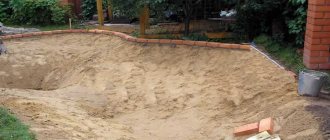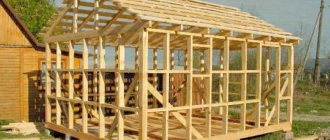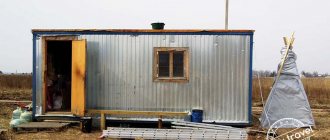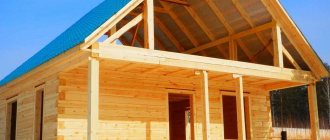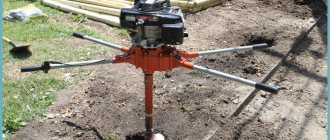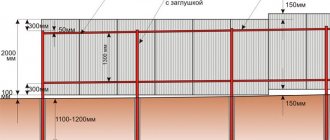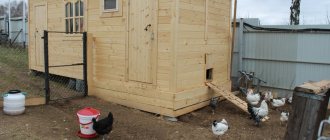Permission to construct a pond
Decorative pond on the site
The legislation of the Russian Federation establishes GOST 19179-73, on the basis of which a pond is a body of water built on private territory. If it is dug for water storage and/or domestic use, no permits are required.
Requirements for constructing a pond
The legal difference between a pond in a dacha and other types of reservoirs is the right of ownership of the land where it is built. If the site is owned by the municipality, an application to the authorities will be required.
Legislative features of building a pond with your own hands:
- There are no restrictions on the creation of artificial reservoirs.
- Permission does not need to be obtained if the land is registered as a property.
- Permission for construction is required when it is planned to connect a pond with a water body of federal significance.
The construction of dams or location in the bed of a watercourse is regarded as a reservoir. However, there is no single regulatory act regulating construction. All established norms are contained in different laws, which creates legal conflicts.
Types of ponds and their differences
If the size of the plot allows, you can build a fish pond
Before creating a pond with your own hands, it is recommended to choose the appropriate shape and size. Study the technology and think about decorating the pond. Designers note that a small lake is relevant for a vast area, but in any case it is necessary to create a single ensemble.
Depending on the assigned functions, there are four types of artificial reservoirs:
- Small form - designed to decorate a garden plot, playing the role of an element of landscape design. No active recreation is expected near such a reservoir.
- Pond for breeding fish - the size depends on the capabilities of the owner and the parameters of the territory. The construction of a small backwater, for example, with beautiful cold-water trout, is allowed. To implement this idea, it will be necessary to install a filtration system and oxygen enrichment equipment.
- A decorative pond is a medium-depth reservoir equipped with a border, a bridge and lighting.
- A swimming pond is a type of swimming pool.
The purpose of the reservoir determines its location, size and shape. When planning to make a water reservoir on your site, decide on the style. The normal option provides a stable design of various modifications. The following styles are used in landscape design: classic, modern, High Tech and minimalism. The pond, designed in a landscape style, has a broken coastline. The only condition is a natural appearance.
The style determines the topography of the summer cottage. The flat surface allows you to arrange a pond of any configuration. Sudden changes and the presence of a slope require the construction of cascading waterfalls, bridges, and wooden flooring.
Choosing the location and size of the reservoir
What shape the pond will be is decided by the owner of the site
There are no uniform rules for choosing the location or size of a pond. Each owner decides for himself what shape to give the tank: circle, square or asymmetry. The main task of landscaping is to create a unified style on the site.
For example, the cascade type involves searching for a suitable location. Consider the properties of the soil and the terrain. If the area is hilly, a stream with rapids will fit perfectly into the landscape. For a flat surface, create a homemade pond.
The presence of trees with a strong root system near a reservoir can cause the collapse of the slopes of a home lake. In addition, leaves and small debris clog the tank. Pond cleaning will become a daily task.
An open, sunny space is essential for decorating in a modern style. The rays contribute to the heating of water and the development of flora and fauna of the reservoir. Position the pond so that the smallest part of it is in the shade.
Where does the creation of a pond begin?
The creation of a pond begins with its design, taking into account the size, shape and landscape of the land. The project begins with choosing the location of the pond and its shape. The larger the area of the plot, the larger the pond can be. Although even a small and shallow pond can become a true decoration of the site.
When designing, the following circumstances must be taken into account:
- choice of pond shape (square, round or winding);
- the water in the pond should not be exposed to direct sunlight for more than 6 hours a day, otherwise algae and bacteria will begin to actively multiply in the water;
- the possibility of taking water from the pond and replenishing it using the runoff of melt or storm water or from a nearby spring.
Technology for constructing a pond at the dacha
Three methods have been developed for building a pond at the dacha with your own hands - a ready-made form, the use of film or improvised materials. A step-by-step algorithm will help simplify the process of arranging a pond in the garden.
Finished form
You can buy a ready-made plastic form for a pond
Before you make a pond with your own hands, choose a suitable location and manufacturer of the structures. Most manufacturers supply impact-resistant plastic molds to the market. The products are durable and easy to maintain.
Construction of an artificial reservoir on a site with a house:
- Select a place on the site and place the finished form on the ground. Circle the structure - you need to dig a hole according to the lines. The dimensions of the pit are set to be 10 cm larger than the tank.
- After installing the mold, fill the container 1/3 with water. Add soil mixed with sand into the resulting voids.
- Gradually add soil and fill the form to the edge.
- Cover the contour with wild stones, plasters, or plant moisture-loving plants. Do the decorating step after 100% shrinkage of the structure.
Concrete bowls are suitable for ponds intended for swimming. A solid base is also used for northern latitudes with sudden temperature changes.
Using film
Using waterproofing film for water
You can improve your garden or garden plot with your own hands using film. To avoid mistakes, follow the step-by-step work algorithm and familiarize yourself with the intricacies of the process.
Buy waterproofing material with a margin in size, because when installing a pond you will need 20-30 cm to fix the edges.
To construct a landscape element you will need the following tools:
- nylon cord or rope;
- polyvinyl chloride film;
- bricks;
- sand;
- stones;
- shovel.
3-4 hours before starting work, spread the film in a sunny place. Under the influence of rays, the material will heat up and become more elastic.
Instructions:
- Using a fishing line, mark the outline of the pond. The pit should be dug according to the dimensions specified in the project. Upon completion of the work, debris is cleared from the bottom, tree roots are uprooted and large objects are removed. This will prevent damage to the material.
- Pour sand or fine crushed stone into the bottom of the hole - a layer thickness of 10 cm.
- Installation of the waterproofing film is carried out on top of the created “cushion”. If there is not enough material in width, join the pieces by soldering.
- It is recommended to make a foundation pit in several levels, even if the project does not include a stream or cascade. The formed steps will serve as a platform for planting plants. Due to the lack of soil, flowers are placed in pots.
- Dig a ditch 15 cm deep along the perimeter of the reservoir. It is necessary to secure the edges of the film. Fill the ditch with gravel. The material allowance on top should be at least 0.5 meters - this will allow the structure to be properly fixed. Fill the finished reservoir with water.
- Cover the contour with large pebbles or plastic.
Setting up a pond with your own hands takes no more than one day. Follow the technology and recommendations to make a reliable design. At the final stage, plant the plants.
Using scrap materials
An old cast iron bathtub will turn into a small pond
Making a concrete base, as well as purchasing a ready-made form or film, does not always fit the budget of the dacha owner. To create an artificial reservoir on a site, it is enough to use unnecessary household items. As a rule, this does not require digging a pit and purchasing construction tools.
To organize a pond on your site with your own hands, you can use available materials:
- An old bathtub made of cast iron or acrylic - you don’t need to dig a hole to install it, just create a small depression. Fill the water drainage area with small pebbles or expanded clay. Cover the bottom of the tank with varnish or water-repellent paint.
- Installation of a copper basin also does not require a pit. It is allowed to use the container as a temporary pond or a permanent element of landscape design.
- Tires can become a decorative part of the garden if the structure is formed correctly. Cut the product in half and place it in a pre-prepared hole. Treat the surface with polymer film.
- Galvanized buckets, plastic pots and barrels are all suitable for creating a small pond. Use polymer materials as waterproofing. Aquatic plants are grown in such tanks.
Minimal costs coupled with a creative approach allow you to create an original pond. Decorating a site with your own hands is a separate form of art. With the proper approach, the pond will become the final element of the landscape.
Types of artificial reservoirs
When choosing the type of future reservoir, it is important to determine in advance what functions it should perform. For example, for purely decorative purposes, you can arrange a mini-pond, waterfall, cascade, fountain and even a swamp. To create them, heavy equipment is not used; the basis of such reservoirs are special forms made of polymer materials, which are simply dug into the ground and filled with water. As a rule, the size of such reservoirs is very limited. And if a pond or swamp is characterized by stagnant water, then additional equipment will be needed to arrange a waterfall, cascade, and especially a fountain.
More serious costs will be required when constructing a large-volume artificial pond, a system of interconnecting ponds or a swimming pool, or when constructing fire reservoirs. You can’t do this without earth-moving equipment and special knowledge.
Decorating a country pond
Water lilies grow in deeper bodies of water
After completing the construction of the pond, start decorating. Design elements can be purchased at the store or you can use available materials, including small trees or bonsai.
Ideas for an artificial pond:
- live fish and aquatic plants;
- wooden mill;
- arrangement of a bridge, fountain or cascading stream;
- equipped with lighting;
- installation of benches and other furniture for relaxation;
- improvement with stone or colored gravel;
- installation of a wrought iron fence.
Decor is the final stage, forming a single ensemble on the site. During installation, experts recommend adhering to the following rules:
- Choose stones that are approximately the same size. The layering of different elements creates chaos and is visually repellent.
- Take care of the safety of your household - do not use sharp or fragile objects. The design must be reliable and strong.
- Do not dig a hole with a vertical wall, as such a pit is difficult to decorate.
- Container gardening is easy to maintain.
Designer fantasies are inexhaustible. The choice of one or another decoration element depends on the taste of the owner of the dacha. Regardless of the budget, the pond on the site should not stand out from the general style of the landscape.
What materials can be used to build a pond?
The most common materials for making garden springs are containers of different sizes. By digging a large basin, bathtub, or special tank purchased in a store into the ground, you can immediately solve all problems with waterproofing the interior space. But there are other types of ponds:
- Concrete structures. They are created for a long time, because the material does not allow frequent rebuilding and reconstruction of the water tank. Concrete is impermeable and, when poured correctly, lasts for several decades. Swimming pools are made from it, tiled, but a “wild” pond will also look beautiful. To place plants in the water, you can make steps during the construction stage and camouflage the banks with stone.
- Special membranes and polyethylene. Rolled materials are not very durable and can be damaged by tools during maintenance or by plant roots. But the polyethylene film lasts for several seasons if it is protected from sunlight and the pond is cleaned carefully. Water and soil act as protection, which should cover the surface of the film as much as possible. To place plants, you will have to make steps for them when digging a pit. The film is not very convenient for swimming ponds; it will have to be changed often.
The use of other types of materials is also unlimited: a rubber tire, a wooden or tin basin, a specially welded metal container, etc. can be used as a reservoir.
Features of preparing a country pond for wintering
A properly organized pond on a personal plot requires a similar attitude in care. The more natural the appearance, the less hassle there is in cleaning. Try not to interfere with the natural process. Over time, nature will establish bio-balance and the garden will sparkle with new colors.
In autumn, the leaves fall into the pond and sink to the bottom. Dead parts of the flora together with microorganisms form sludge, which leads to pollution of the reservoir. If there are a lot of trees nearby before wintering, you need to prepare the water for frost:
- During leaf fall, stretch a fine mesh net over the surface.
- Do not trim aquatic and coastal plants - representatives of the fauna hide in them for the winter.
- Leave the stems that rise above the water, because through them oxygen enters the pond, preventing deep freezing of the water.
- Remove the service equipment - clean, lubricate the parts with machine oil and store them in the shed.
If the pond freezes, do not try to break the ice - this scares the fish and other aquatic inhabitants.
We design an artificial pond
The easiest way to decorate a small pond is to line it along the contour with decorative stones or mask the edge of the container with turf and soil. A large pond made of film with a stone lining of the shore will need to be lined with flagstone along all sides, starting from the bottom and gradually raising the masonry to the level of the banks. This will protect the film from the sun and prevent it from swelling into bubbles under water. You can pour pebbles or river sand at the bottom, lay rounded stones or remnants of flagstone.
The banks are decorated with stone blocks. If necessary, arrange a cascade of waterfalls from stone tiles. The decor should completely mask the film or sides of the containers, water pipes, electrical wiring (for lighting, pump, etc.).
Plants and additional accessories
Pond design most often requires planting plants on the shore and in the water column. Local winter-hardy semi-aquatic grasses and shrubs are planted on the shore, arranging clumps in accordance with their design. It is more convenient to plant aquatic ones in shallow plastic containers and place them on shelves so that the edges of the containers are under water. During the summer, indoor plants that naturally lead a semi-aquatic lifestyle can be brought into ponds in the garden: cyperus, spathiphyllum, etc. They will give the pond an unusual look.
Additional accessories may include decorative garden figures. You can also make them yourself. The theme of such products should be related to water: it could be frogs, herons, turtles, etc.
